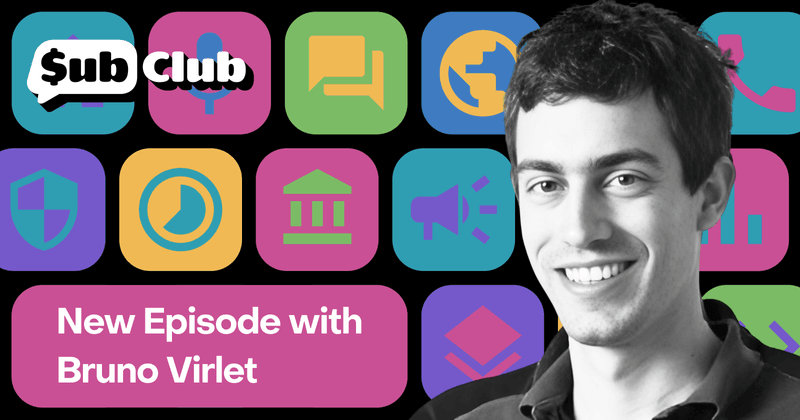How a dorm room project became a 5M MAU scanning app
From a student side project to a thriving business - how Genius Scan stayed focused on users and kept growing.

What happens when you focus on users instead of metrics?
Bruno Virlet, co-founder of Genius Scan, joins the podcast to share how a side project turned into a leading document scanning app with 5 million monthly active users – all without external funding.
From dorm room project to thriving business
Genius Scan started as a simple idea: make document scanning easier. But growing it into a successful, bootstrapped business meant focusing on what really mattered: customer experience. Instead of chasing short-term gains, the team prioritized transparency, usability, and long-term trust.
Key moments in their journey include:
- Experimenting with monetization: Transitioning from one-time purchases to subscriptions helped Genius Scan sustain growth without relying on ads or invasive upsells.
- Embracing competition: When Apple and Google introduced native scanning features, instead of panicking, the team doubled down on their core strengths: offering better functionality and support.
- Leveraging unexpected insights: A server crash revealed a paywall tweak that significantly improved conversions, showing that even accidental A/B tests can drive meaningful growth.
Lessons for indie developers
Bruno’s experience proves that indie developers can thrive without outside funding. By solving real problems and delivering value, small teams can compete with tech giants. His advice?
- Simplify your pricing. Reducing complexity helps users make decisions faster and can lead to higher revenue without impacting adoption.
- Stay close to your customers. Listening to feedback and focusing on user experience leads to organic growth and long-term loyalty.
- Test everything: even the small stuff. Small changes in messaging, UX, or pricing can have a big impact on performance.
Listen to the full episode to hear more from Bruno about Genius Scan’s journey and what it takes to build a sustainable, customer-first app business.
You might also like
- Blog post
Modeling attribution on iOS: what works, what doesn’t, and how to choose
How to navigate the messy world of SKAN, AEM, and probabilistic attribution — plus two practical frameworks to get a clearer picture of campaign performance.
- Blog post
Your sprints must pay for themselves: Dan Layfield’s product advice
What’s worth building? Dan Layfield shares a 3-bucket framework to help app teams prioritize features, fix churn, and ship faster.
- Blog post
Is monetization hurting your app’s user experience?
Don’t trade short-term revenue for long-term trust. How ethical UX can still drive effective monetization.

